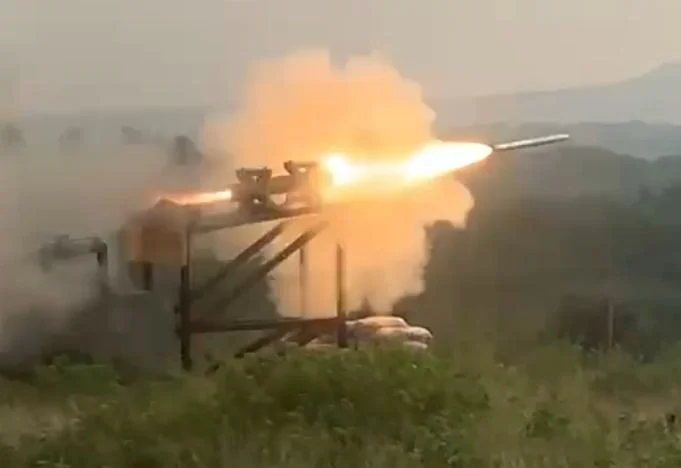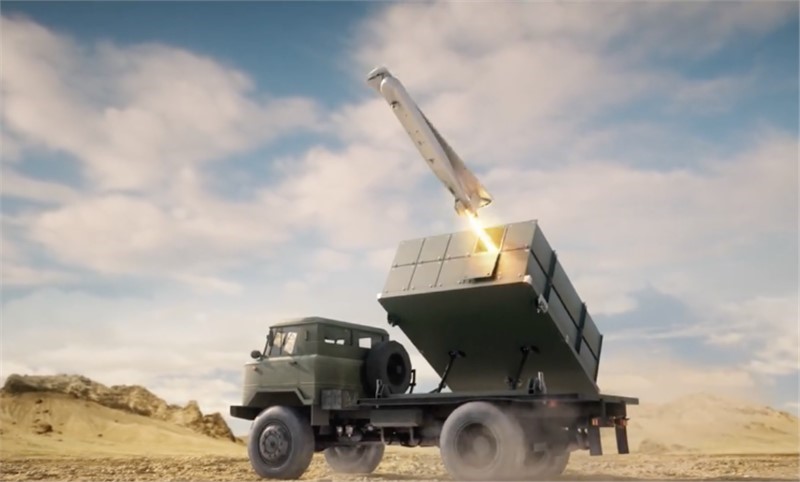SOURCE: AFI


Recent satellite imagery from Karachi in March 2025 has exposed a critical vulnerability in the Pakistan Navy’s subsurface capabilities, with only two of its five operational submarines currently in the water. The remaining three are either undergoing prolonged maintenance and upgrade cycles or are stranded on land, raising serious questions about Pakistan’s naval readiness amid escalating tensions with India. This development, combined with Pakistan’s reported suspension of the Shimla Agreement and consideration of withdrawing from the Tashkent Agreement, paints a picture of a navy struggling to maintain its strategic edge in the Arabian Sea.
Satellite imagery from Karachi’s naval docks, shared widely on X in late April 2025, reveals a stark reality for the Pakistan Navy. Two of its five operational submarines—comprising two Agosta-70 (Hashmat-class) and three Agosta-90B (Khalid-class) vessels—are docked for extensive maintenance and upgrades, with cycles that remain ongoing as of April 25, 2025. A third submarine, likely one of the Agosta-90B class, is out of the water entirely, positioned on land at the Karachi Shipyard and Engineering Works (KSEW) for repairs or modernization. This leaves only two submarines—potentially one Agosta-70 and one Agosta-90B—operational, significantly weakening Pakistan’s underwater warfare capabilities.
Continue readingSOURCE: AFI


Hindustan Aeronautics Limited (HAL), India’s premier aerospace and defence public sector undertaking (PSU), has long been the backbone of the country’s military aviation manufacturing. Established in 1940, HAL was envisioned as a comprehensive production agency, responsible for designing, developing, and manufacturing aircraft and helicopters to meet the Indian armed forces’ needs.
However, recent trends suggest that HAL is increasingly being relegated to the role of a mere assembler, with private sector companies taking the lead in defence production. While this shift has spurred private sector growth and innovation, it threatens HAL’s core identity and raises concerns about the long-term financial and strategic implications for India’s defence ecosystem.
Continue readingSOURCE: AFI


In a dramatic escalation of tensions following India’s suspension of the Indus Waters Treaty (IWT) on April 23, 2025, Pakistan is reportedly mobilizing international pressure to paint India as a regional aggressor. This move comes in the wake of the Pahalgam terror attack, which killed 26 civilians, prompting India to suspend the IWT, downgrade diplomatic ties, and close the Attari-Wagah border.
As Pakistan seeks to rally global support, India must deliver a clear and uncompromising message to world powers: sever ties with terror-sponsoring Pakistan or risk losing India’s strategic partnership.
Continue readingSOURCE: AFI


India’s unprecedented decision to suspend the Indus Waters Treaty (IWT) on April 23, 2025, in response to the Pahalgam terror attack has sent shockwaves through South Asia, with Pakistan labeling the move an “act of war.” The suspension, which halts data sharing and technical cooperation with Pakistan, signals India’s intent to leverage its upstream position on the Indus River system to pressure Islamabad over its continued sponsorship of terrorism.
As Pakistan suspends the Shimla Agreement and considers withdrawing from the Tashkent Agreement, India is poised to divert waters from the western rivers (Indus, Jhelum, and Chenab) allocated to Pakistan under the IWT. This article examines the estimated timelines for water diversion projects—ranging from storage dams to large-scale basin rerouting—and their strategic implications in the context of escalating tensions and India’s naval posturing in the Arabian Sea.
Continue readingSOURCE: RAUNAK KUNDE / NEWS BEAT / IDRW.ORG


The Indian Air Force (IAF) and the Defence Research and Development Organisation (DRDO) have initiated discussions to modernize the three Israeli-supplied EL/M-2090 AESA Phalcon Airborne Warning and Control Systems (AWACS), mounted on Russian IL-76 A-50E/I heavy-lift jets.
According to sources cited by idrw.org, the technology underpinning these systems, now over 25 years old, is increasingly viewed as a legacy platform despite regular software updates that have kept it operational as the IAF’s only 360-degree coverage AWACS.
Continue readingSOURCE: RAUNAK KUNDE / NEWS BEAT / IDRW.ORG


India’s Light Combat Helicopter (LCH), the HAL Prachand, is poised for a significant enhancement in its offensive capabilities. A collaborative effort between TridenTech Engineering, IIT Madras, Bharat Electronics Limited (BEL), Reliance Aerospace Limited (RAL), and BILVA Technologies has resulted in the indigenous development of an 80mm unguided rocket.
This new weapon system is slated to arm the Prachand, replacing the existing 70mm calibre FZ275 LGR (Laser Guided Rocket) developed by Thales, a global leader in aerospace technology.
Continue readingSOURCE: RAUNAK KUNDE / NEWS BEAT / IDRW.ORG


Saab Aeronautics has positioned its Gripen-E fighter jet as a frontrunner in the Indian Air Force’s (IAF) Multi-Role Fighter Aircraft (MRFA) tender for 114 advanced jets by highlighting its adaptability and compatibility with Indian-made weapons, including the Astra Beyond Visual Range Air-to-Air Missile (BVRAAM) series. Per-Olof Marklund, Director and Head of Technology and Innovation at Saab Aeronautics, emphasized the Gripen-E’s flexible and open avionics architecture, which enables rapid integration of weapons and systems, sometimes in just hours.
This capability, driven by the jet’s unique split avionics architecture, offers India a versatile platform tailored to its self-reliance goals under the Aatmanirbhar Bharat initiative.
Continue readingSOURCE: AFI


Since the 2019 Balakot airstrike, which saw Indian Air Force (IAF) jets strike a Jaish-e-Mohammed (JeM) terrorist camp deep inside Pakistan, India has significantly bolstered its long-range missile capabilities. The induction of advanced munitions like the Rudram-II, ROCKS, SCALP, and BrahMos-A has transformed the IAF’s ability to conduct precision strikes deep inside Pakistan without needing to approach the International Border (IB) or Line of Control (LoC).
These upgrades, driven by lessons from Balakot and escalating regional tensions, enhance India’s standoff strike capabilities, enabling surgical operations while minimizing risks to aircraft and personnel.
Continue readingSOURCE: AFI


In any modern conflict, information dominance and situational awareness are often the deciding factors between success and failure. For the Indian Air Force (IAF), a potential future conflict with Pakistan demands a strategy that goes beyond tactical airstrikes and punitive retaliation. It requires shaping the battlespace by blinding the enemy early—specifically by targeting critical assets such as the Saab 2000 Erieye Airborne Early Warning and Control System (AWACS) operated by the Pakistan Air Force (PAF).
AWACS aircraft like the Saab 2000 Erieye are strategic force multipliers, enabling long-range detection, real-time command and control, and coordinated interception operations. These platforms serve as the eyes and ears of the PAF, extending radar coverage deep into Indian airspace and enabling early warning of IAF fighter or missile movements.
Continue readingSOURCE: AFI


In a potential escalation of diplomatic tensions, recent reports suggest that Pakistan is contemplating withdrawing from the Tashkent Agreement of 1966, a historic peace accord signed with India to end the 1965 war. This development follows the Shimla Agreement of 1972, which has long served as the cornerstone of bilateral relations between the two nations. The move, reportedly under consideration in response to India’s actions on the Indus Waters Treaty and heightened tensions after the 2025 Pahalgam terror attack, could have significant implications for South Asian geopolitics.
The Tashkent Agreement, signed on January 10, 1966, in Tashkent, Uzbekistan, was mediated by the Soviet Union to resolve the 1965 Indo-Pakistani War. Key provisions included the withdrawal of forces to pre-war positions, a commitment to non-interference in each other’s internal affairs, and the restoration of diplomatic and economic ties. However, the agreement failed to address the Kashmir dispute, leading to widespread criticism in both countries for its perceived shortcomings.
Continue readingSOURCE: IDRW.ORG


The Indian Army is actively pursuing the development of a long-range mobile launcher system for loitering munitions, capable of striking targets beyond 300 km from truck-mounted platforms. This ambitious initiative, driven by the need to counter advanced threats along India’s borders with China and Pakistan, marks a significant shift from the Army’s current inventory of short- to medium-range loitering munitions, such as the Nagastra-1, which have ranges of 30-100 km and are designed for man-portable operations.
According to defence sources close to idrw.org, the Army is engaging both public and private sector companies to meet this requirement, with preparations underway to issue a Request for Information (RFI) soon. This move underscores India’s strategic push to bolster its precision strike capabilities and adapt to the evolving dynamics of modern warfare, where long-range loitering munitions are proving to be game-changers.
Continue readingSOURCE: IDRW.ORG


Hyderabad-based Eon Space Labs Pvt Ltd, a rising star in India’s space-defence ecosystem, has unveiled its latest breakthrough—the Buho225, an advanced infrared imager designed for maritime surveillance. Showcased in April 2025, this cutting-edge electro-optical infrared (EO-IR) system promises to redefine coastal and naval operations with its compact design, high-resolution imaging, and robust performance in challenging maritime environments.
As India pushes for self-reliance under the “Make in India” initiative, the Buho225 positions Eon Space Labs as a key player in delivering indigenous solutions for national security. This article explores the capabilities of the Buho225, its strategic significance, and Eon Space Labs’ growing footprint in defence technology.
Continue readingSOURCE: AFI


Declassified US intelligence reports from the 1980s and 1990s, released amid widespread outrage over the recent Pahalgam terror attack, have raised alarming concerns about the potential for a nuclear conflict between India and Pakistan. The documents, published by the National Security Archive on April 22, 2025, suggest that while the likelihood of war between the two South Asian rivals remains low, a “miscalculation or irrational response” could escalate a conventional conflict into a nuclear exchange, with catastrophic consequences for the region and beyond.
The release of these reports coincides with heightened tensions following a deadly terror attack in Pahalgam, Jammu and Kashmir, on April 23, 2025, which claimed the lives of 26 people, mostly tourists. India has attributed the attack to Pakistan-based terror groups, with Defence Minister Rajnath Singh vowing a “loud and clear” response. The attack is believed to have been triggered by provocative rhetoric from Pakistan’s Army Chief, General Asim Munir, who recently reiterated Pakistan’s commitment to the “liberation” of Kashmir, calling it the country’s “jugular vein.”
Continue readingSOURCE: AFI


In a development that significantly enhances India’s intelligence, surveillance, and reconnaissance (ISR) capabilities, a Bombardier Global 5000 jet operated by the Research and Analysis Wing (RA&W) has been spotted actively flying missions near the western border. What makes this platform particularly potent is its integration of an advanced Israeli Synthetic Aperture Radar (SAR) system that allows it to peer deep into Pakistani territory — capturing high-resolution images of targets more than 150 km inside the border.
The Global 5000, a long-range business jet manufactured by Bombardier, has been extensively modified for electronic and radar surveillance roles. It is used by RA&W’s Aviation Research Centre (ARC), which operates a small but highly specialized fleet of airborne intelligence assets. The aircraft is capable of flying at altitudes above 45,000 feet, giving it a wide field of view and extended radar horizon.
Continue readingSOURCE: AFI


The Indus Waters Treaty (IWT) of 1960, a World Bank-brokered agreement between India and Pakistan, has long been a cornerstone of water-sharing arrangements in South Asia. However, recent speculation about India’s potential withdrawal from the treaty, following heightened tensions over terrorism and border disputes, has brought renewed focus on its implications for Pakistan, particularly its agriculturally vital Punjab province. A detailed analysis of the canal network in Pakistani Punjab, as highlighted in a recent post by X user VatsRohit (@KesariDhwaj), underscores the region’s dependence on the Chenab and Jhelum rivers and the potential consequences of any disruption in water flow under the IWT.
Pakistani Punjab, the country’s most populous and agriculturally productive region, relies on an intricate network of canals to sustain its economy. This network, one of the largest irrigation systems in the world, irrigates millions of hectares of farmland, supporting crops like wheat, rice, and sugarcane that form the backbone of Pakistan’s food security. According to VatsRohit’s post, the canal system is primarily fed by the Chenab and Jhelum rivers, two of the three western rivers (along with the Indus) allocated to Pakistan under the IWT. Run-off from the eastern rivers (Ravi and Sutlej), controlled by India, also contributes to the system, though to a lesser extent.
Continue reading